Amelanchier utahensis, Utah Serviceberry
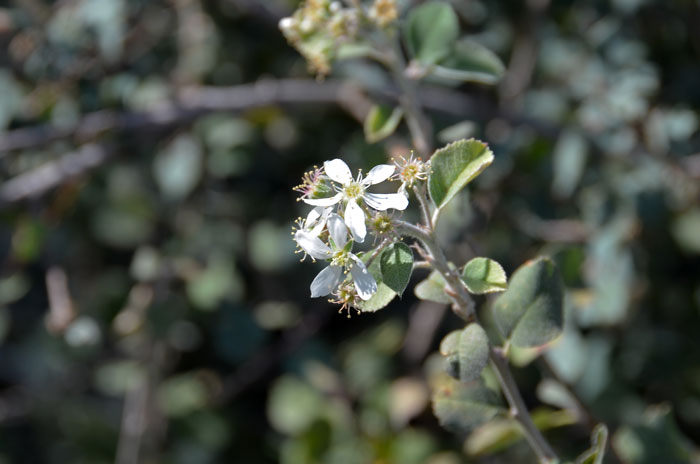
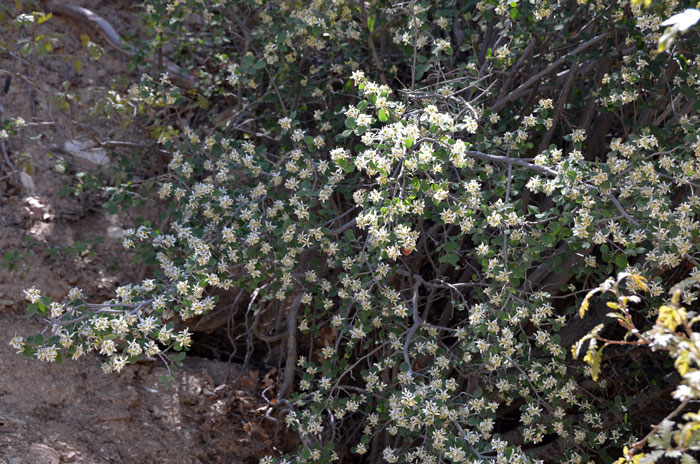
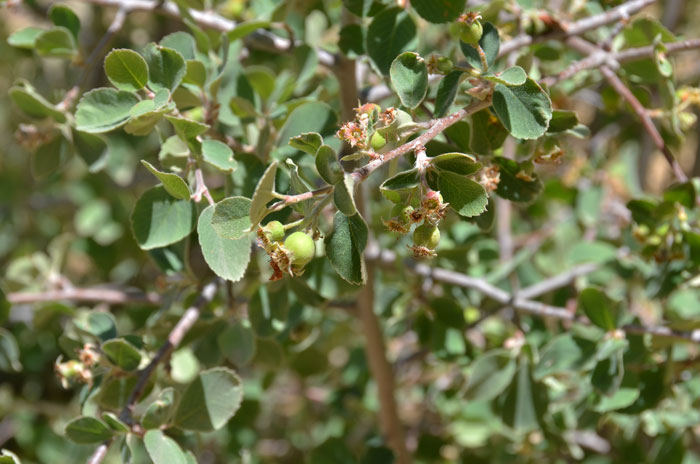
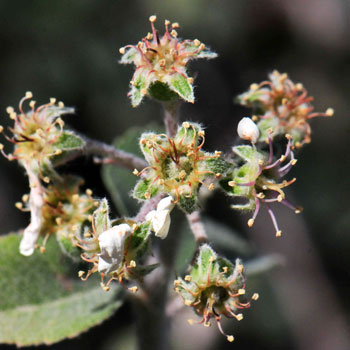
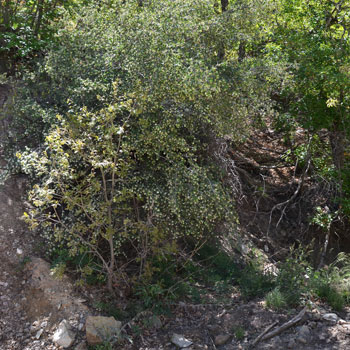
Scientific Name: Amelanchier utahensis
Common Name: Utah Serviceberry
Also Called: Serviceberry, Utah Shadberry, Western Serviceberry
Family: Rosaceae or Rose Family
Synonyms: (Amelanchier rubescens var. cinerea, Amelanchier utahensis subsp. utahensis)
Status: Native
Duration: Perennial
Size: Up to 12 feet more of less.
Growth Form: Shrub, tree; twigs glabrous to white-tomentose; bark is ash-gray; multiple branches.
Leaves: Green; dull green below or grayish; about 1 ½ inches long; deciduous; leaf shape ovoid; margins entire to serrate below middle of leaf; glabrous to minutely tomentose.
Flower Color: White or pinkish; showy flowers in clusters of 3 to 8; racemes; petals white, elliptic; fruit is small black or dark-purple.
Flowering Season: April to May.
Elevation: 2,000 to 7,500 feet; 500 to 10,000 feet in California; 5,000 to 7,000 feet in Texas.
Habitat Preferences: Dry rocky slopes, steep rocky hillsides, desert mountain scrub, pinyon-juniper and woodland habitats, coniferous forest.
Recorded Range: Amelanchier utahensis is found in the southwest and western parts of the United States in AZ, CA, CO, ID, MT, NM, NV, OR, TX, UT, WA, WY. In Arizona, both varieties are found throughout most of the state with few records in the southern half of the state. It is also native to northwest Baja California and northwest Mexico.
North America & US County Distribution Map for Amelanchier utahensis.
U.S. Weed Information: No information available.
Invasive/Noxious Weed Information: No information available.
Wetland Indicator: In North America Amelanchier utahensis has the following wetland designations: Arid West, FACU; Great Plains, FAC; Western Mountains, Valleys, and Coast, UPL.
FACU = Facultative Upland, usually occur in non-wetlands, but may occur in wetlands
FAC = Facultative, occur in wetlands and non-wetlands
UPL = Obligate Upland, almost never occur in wetlands.
Threatened/Endangered Information: No information available.
In Arizona there are 2 species of Amelanchier, in California there are 4 species, New Mexico, Nevada, Texas and Utah each have 3 species. All data is approximate and subject to taxonomic changes.
There are 2 varieties in Amelanchier utahensis;
Amelanchier utahensis var. covillei, Coville's Serviceberry (AZ, CA, NE, UT);
Amelanchier utahensis var. utahensis, Utah Serviceberry (AZ, CA, CO, ID, MT, NM, NV, OR, TX, UT, WA, WY).
Comments: As with other members of Rosaceae in Arizona, Amelanchier utahensis is an important browse species for deer, bighorn sheep and livestock. The nectar attracts a host of insects and the fruits are eaten by mammals and birds. In Texas the fruit berries are eaten by Sage Grouse.
For a comprehensive thoroughly documented review of Amelanchier utahensis see the USDA USFS Fire Effects Information System, or FEIS.
Amelanchier utahensis has been used for a variety of uses by North American indigenous peoples.
Havasupai Fiber, Furniture Wood used to make cradle boards.
Hopi Other, Ceremonial Items Plant used to make pahos (prayer sticks).
Hopi Other, Hunting & Fishing Item Plant used to make bows and arrows.
Isleta Food, Fruit Fruit formerly used for food.
Navajo Drug, Gynecological Aid Plant used during labor and delivery.
Navajo, Ramah Drug, Panacea Dried fruit used as a 'life medicine.'
Paiute Food, Dried Food Berries crushed, dried and used for food.
See ethno-botanical uses at Native American Ethnobotany, University of Michigan, Dearborn.

